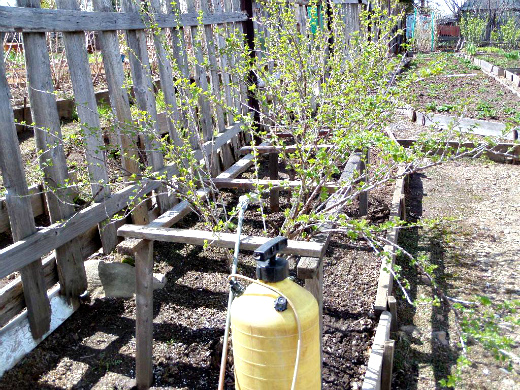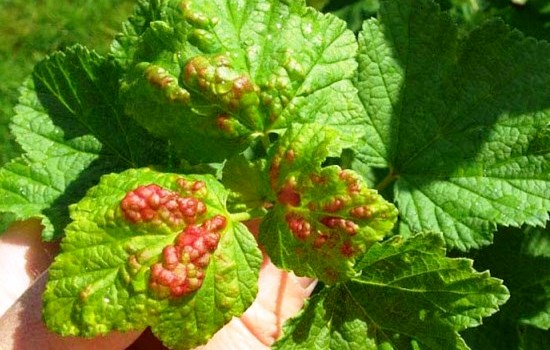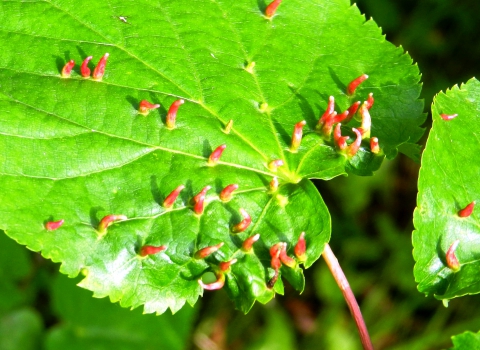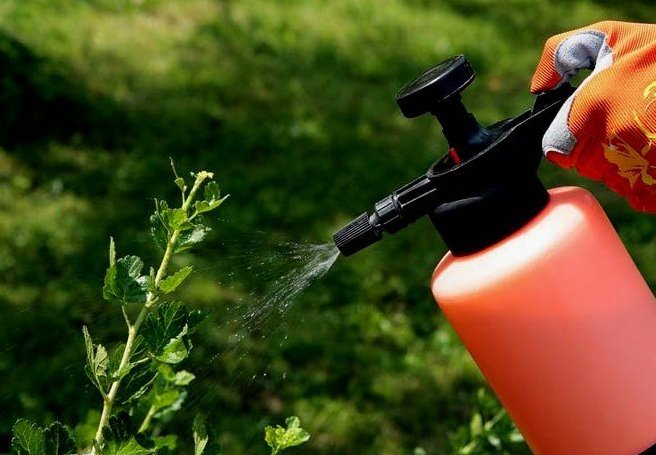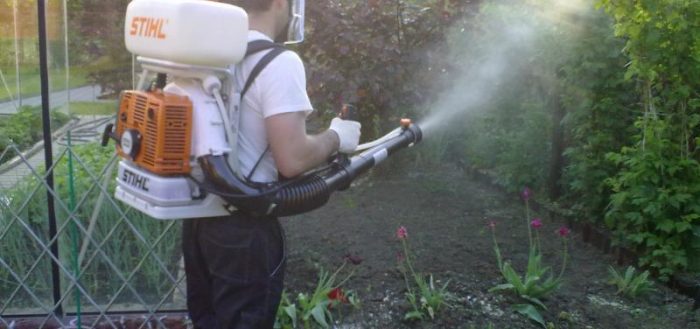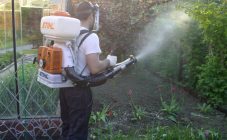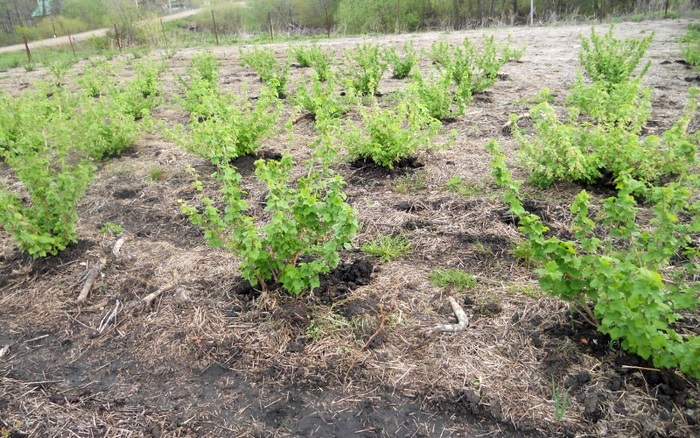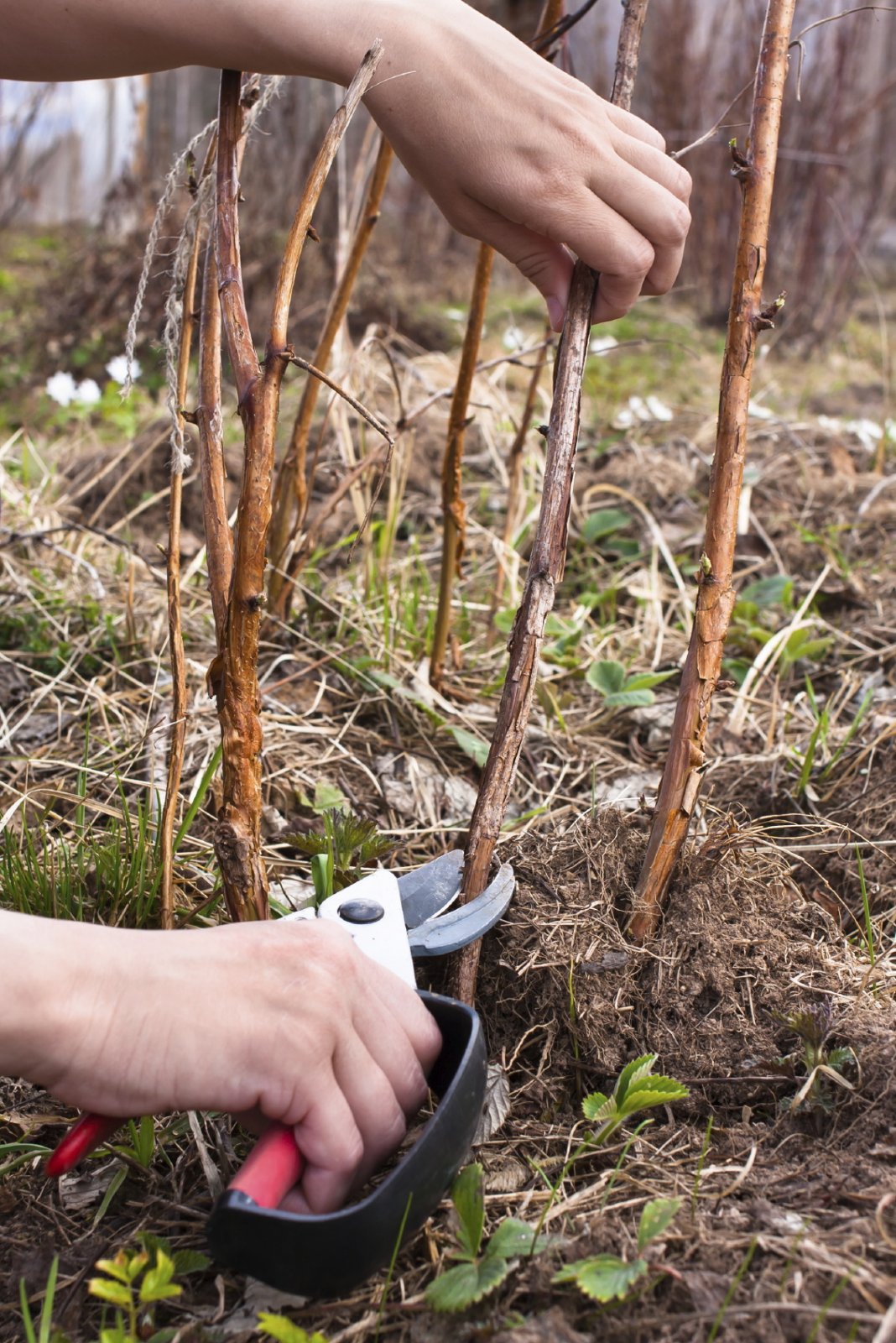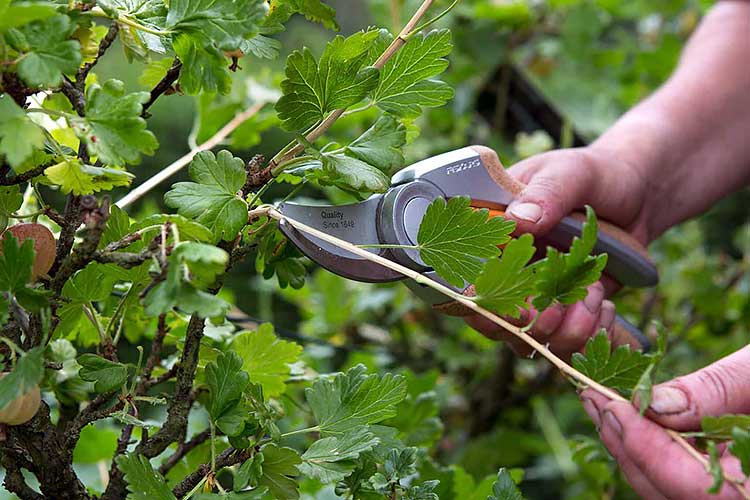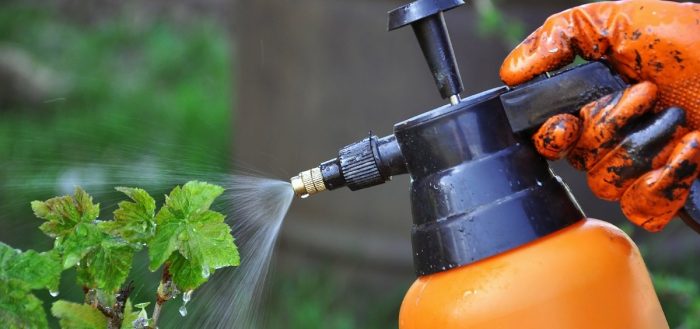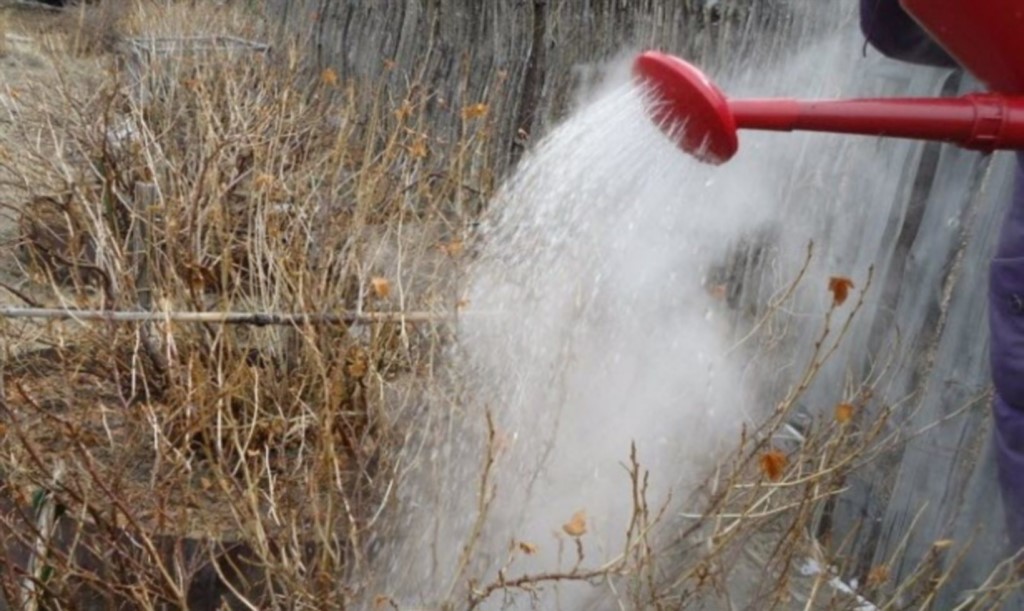Content:
With the onset of spring days, warmth comes, in gardens and summer cottages, berry bushes "open" from the snow "blanket", currants and gooseberries are the first to do this. Together with them, the successfully overwintered harmful insects wake up. They lurk both on the branches and inside the buds, and even on the fallen leaves of last year on the ground. Therefore, it is very important that the spring processing of currants and gooseberries from pests is carried out on time. The reward for the hardworking gardener will be a preserved crop and healthy berry bushes.
Prevention and treatment of garden diseases
Fruit pests primarily affect the leaves. This is fraught with a complete lack of kidneys next year. Since the structure of the foliage of these berry crops is such that a bud ripens at the base of each leaf, and if the leaf is damaged, it dies or does not form at all. The result is dry shoots without foliage and buds, respectively, such a bush will not yield a crop. Infected fruits and foliage, accumulating on the ground, serve as a breeding ground for pests for neighboring plants, as well as a refuge for them for the winter. Therefore, in the spring, all parts of the plant should be processed: branches, buds, young shoots, as well as the soil and fallen leaves on it.
It is recommended to start fighting for currant and gooseberry crops in early spring. It is advisable to spray the shrub before the new buds bloom or during their earliest swelling. If winter (weather) is prolonged, the start of spraying should be postponed.
Spring signs and culprits
With their sweet berries and fleshy green foliage, gooseberries and all types of currants are attacked by various diseases and insect pests. They suck the juices from young bushes, eat leaves, which sharply impairs the immunity of plants and exposes them to diseases that are brought in by viruses or fungal spores. Diseases are spread by insects that carry infected plant particles on the bristles of the legs or proboscis and antennae.
So, powdery mildew settles on old shoots. This is a gray powdery coating with black blotches, which thickens over time, as a result of which the berries become smaller, lose juices, and the leaves are wrapped in a tube and so dry.
The glass caterpillar makes its way into the shoot, and the currant bud mite, respectively, into the buds. Spider mite females prefer to winter in last year's leaves, next to the spores of ascomycete fungi, which cause anthracnose in currants.
Currant mites actively reproduce in overwintered buds (females lay 3-8 thousand eggs each), hypertrophically inflating them up to 1 cm in diameter. Later they crawl into the young blossoming bud "dwellings", and the old bud dries up without hatching. Also, ticks transfer from plant to plant the disease of terry, which replaces flowers and berries with lilac needle-like outgrowths. Due to the large number of pests and constant migration to new places, a good harvest from the affected areas cannot be expected.
Currant bud moth also feasts on young buds of currants and gooseberries.The caterpillar of this pest is bright orange in color, waits out the winter in cocoons near the ground, and with the onset of warmth moves into swelling buds, damaging 5-7 pieces each. Butterflies appear at the time of the formation of the first green berries and lay their eggs there. The hatching larvae devour the sweet pulp and ripening seeds completely. As a result, having colored ahead of time, the bunches of currants die.
Gluttonous aphids are very small bugs that do great harm because they eat everything in their path: foliage, swollen buds, flowers, leaving no chance for the bushes. Twisted leaves, crooked stunted shoots - this is the result of their activity. No less harmful is another type of aphid - hairy currant: they parasitize on the inside of the leaves, forming red growths on the outside - galls.
Currant glass eats up the wormholes inside the branches and hibernates inside them. Whitish caterpillars with a black-brown head can thus destroy more than half of the branches on the bush. Butterflies hatching there, resembling wasps with purple wings, lay eggs near the buds or in holes in the bark, which young caterpillars devour after a few weeks.
Scabbards - these inconspicuous insects live on currant and gooseberry branches and feed on their juice, which leads to the drying out of the bushes.
The gooseberry and currant berry suffers greatly from moths and sawflies: the latter lay their eggs in the already appeared, but still green fruits, the hatched caterpillars eat the pulp and seeds, which is why the berries acquire a "ripe" color. Therefore, it is categorically impossible to eat such early fruits, they must be destroyed as soon as possible - this is protection from future generations of caterpillars.
Spring processing time
Work should begin as early as possible. The exact "correct" date does not exist - the weather now does not differ from year to year. However, experts recommend focusing on the weather conditions: if they are stably warm for several days (from plus 15-18 degrees) both during the day and at night, then it is time to start spraying.
How to treat a bush from pests
The spring minimum of protective treatment against pests and diseases can be performed in different ways. To choose what can be used to process currants and gooseberries in early spring, you need to know which insects threaten the crop, and the vulnerable periods of its development (for example, if the caterpillars are actively feeding, it means that for their death it is necessary to spray, if the larvae are at rest - contact methods must be used).
Gardeners can choose by what means to fight for the harvest and health of their berry plantings: folk or chemical. Many are inclined to the first option, since it is considered safer for human health and gives a good preventive effect, you can prepare the funds yourself, the ingredients are easy to find in any store. However, folk remedies often require painstaking preparation and laborious preparation.
Chemical preparations (fungicidal and insecticidal) act faster and more efficiently. But the downside is that these chemicals can accumulate in berries and make them harmful to people, you can also get intoxication while processing bushes, if you do not take personal protection measures - wear rubber gloves and respirators.Chemicals can be aimed at poisoning caterpillars and beetles that eat everything, or have a contact effect that causes thermal or chemical burns in larvae, eggs and in myceliums. Such preparations can be used as the first stage of processing, when the buds have not yet blossomed, and chemicals will not get on the berries. Contact insecticides are applied thickly, filling each hole in the bark of the shoots, you should also spray
the soil in the area of the roots of the bush and last year's stale foliage.
Folk remedies for spring processing
A universal remedy for the control of pests of currants and gooseberries is simple boiling water. This is not to say that this method is one hundred percent protection, but it remarkably destroys both those insects that have crawled out on the shoots, and those that have been sitting in the fallen leaves since winter. In this case, no harm is done to the shrub.
It is advisable to carry out the strait with boiling water in the last days of March - early April. The snow should have melted by this time, and the soil may still be slightly frozen. Water should be taken at the rate of 10 liters for 3-4 shrubs. Immediately after boiling, boiling water is poured into a watering can, which makes the processing of bushes more convenient and safe for the worker (the possibility of burns), and also cools it down to the required temperature of 80-85 degrees. Many gardeners additionally dissolve 10 pcs in a bucket of boiling water. aspirin tablets. Such a hot shower is good for gooseberries and currants that are affected by powdery mildew and start to rot.
Another means are soap solution (grated 50 grams of laundry soap is diluted with 2-3 liters of water until dissolved, and another ten liters of water is added), diluted soda ash, tinctures of tomato tops, garlic, tobacco or marigolds. Onion skins soaked in sufficient water are also good at repelling pests.
For cleaning from fungi and other pests, an alkaline solution of ordinary baking soda works well, which must be diluted in a proportion of 100 grams per 10 liters of water. To defeat overwintered insects, you can use already soda ash, diluted at the rate of 50 grams per 10 liters.
Ground sulfur in a proportion of 20 gr. for 1 sq. meter of treated bushes will help get rid of ticks and their larvae, it is better to process it in late April-early May.
To combat fungus and as a top dressing for gooseberries and currants, a solution of 100 g is used. wood ash per 10 liters of boiling water, infused for 2-3 days and carefully strained.
What can be processed: chemistry
If the popular approach to pest treatment does not work, or the gardener does not trust him, chemicals come to the rescue, both strong and more gentle.
Copper sulfate
It is a copper sulphate salt, it works very well against fungus when disinfecting the root system of seedlings. The soil under the currant and gooseberry bushes is treated with a solution of 5 grams of vitriol per 10 liters of water. It is non-toxic and does not accumulate in fruits. Before treatment with this insecticide, all the cracks in the seedlings should be closed with garden pitch, the fallen leaves under the roots should be removed. Spraying is carried out before the buds come out.
Bordeaux liquid
The main component of this mixture is the already described copper sulfate, lime is also included in the composition, sold in the form of powders. For gooseberries, dilution of 50 grams of the mixture in 10 liters of water is suitable. Such a solution is highly acidic and perfectly fights against eggs and larvae of pests, corroding their shell.
If you prepare the solution yourself, you should strictly adhere to the proportions, otherwise an excess of vitriol can harm the currant and gooseberry bushes.
If the treatment is carried out before bud break, a 3% mixture is needed: for 10 liters of water, 300 grams of copper sulfate. Both components (vitriol and lime) are diluted each in their own container in half the volume of water (five liters), after which the vitriol solution is added to the lime solution, mixed, with such a mixture it is already possible to spray the affected bushes.
Nitrafen
Brown paste does an excellent job of removing both pest larvae and other pathogens of currant diseases. Since it is very toxic to humans and has the effect of accumulating in berries, its use has been banned for several years. However, some gardeners import it from a neighboring country and use it to process gooseberries and currants in a dilution of 200 grams of paste per 10 liters of water.
Urea (carbamide)
These white balls are a nitrogen fertilizer that also works very well for killing pests that are still dormant after winter, especially aphids. The granules dissolve easily in water, it is necessary to dissolve half a kilogram of the product in 10 liters of water and process the bushes in early spring.
How to spray better: biological products
Biological products are considered more gentle than strong chemicals, therefore they are used by summer residents more willingly.
The most popular is the drug "Fitosparin": treating gooseberries and currants with it protects plants from fungi and various bacteria.
Also in shops for a garden and a summer residence you can buy:
- "Bitoxibaxicillin" - a remedy for soil dysbacteriosis and a killer of caterpillars that eat leaves, aphids and currant moths;
- "Trichophyte" - a remedy based on trichoderm fungi, they are parasites for powdery mildew and anthracnose, feeding on their pathogens, trichoderms heal shrubs;
- Mikosan is an antifungal agent that works by activating the defenses of shrubs and producing antiparasitic enzymes themselves.
In early spring, responsible gardeners and summer residents should process currants and gooseberries from overwintered and awakening pests. The sooner and more correctly this is done, the better the subsequent harvest of vitamin berries will be. To protect plants, you can use both chemical and proven folk remedies.
